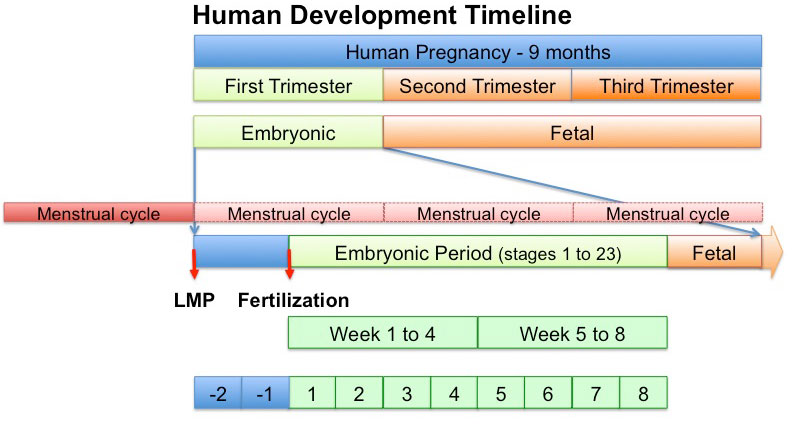Talk:ANAT2341 Lab 11
2017
Wnt/β-catenin signaling promotes differentiation, not self-renewal, of human embryonic stem cells and is repressed by Oct4.
<pubmed>22392999</pubmed>
In studies of human embryonic stem cells (hESCs), conflicting reports claim Wnt/β-catenin signaling promotes either self-renewal or differentiation. We use a sensitive reporter to establish that Wnt/β-catenin signaling is not active during hESC self-renewal. Inhibiting this pathway over mul- tiple passages has no detrimental effect on hESC maintenance, whereas activating signaling results in loss of self-renewal and induction of mesoderm lineage genes. Following exposure to pathway agonists, hESCs exhibit a delay in activation of β-catenin signaling, which led us to postulate that Wnt/β-catenin signaling is actively repressed during self-renewal. In support of this hypothesis, we demonstrate that OCT4 represses β-catenin signaling during self-renewal and that targeted knockdown of OCT4 activates β-catenin signaling in hESCs. Using a fluorescent reporter of β-catenin signaling in live hESCs, we observe that the reporter is activated in a very heterogeneous manner in response to stimulation with Wnt ligand. Sorting cells on the basis of their fluorescence reveals that hESCs with elevated β-catenin signaling express higher levels of differentiation markers. Together these data support a dominant role for Wnt/β-catenin signaling in the differentiation rather than self-renewal of hESCs.
- Oct4 - https://www.omim.org/entry/164177
- Transcription factors containing the POU homeodomain
- Yamanaka factor - Induced pluripotent stem (iPS) cells can be generated
- CD9 - transmembrane 4 superfamily, also known as the tetraspanin family. https://www.ncbi.nlm.nih.gov/gene/928
- mesoderm marker expression - how was this measured?
- why measure beta catenin expression?
Speaker 1
- Self-renewal vs differentiation, surface markers, previous research
Speaker 2
- activation of pathway
- not required for self renewal
- mesoderm marker expression
Speaker 3
- BAR - beta catenin activated reporter
- Wnt3A stim or GSK3 inhibitor
Speaker 4
- delay in activating
- Oct4 represses wnt
The Retinoblastoma pathway regulates stem cell proliferation in freshwater planarians
<pubmed>23123964</pubmed>
Single Adult Kidney Stem/Progenitor Cells Reconstitute 3-Dimensional Nephron Structures in Vitro
<pubmed>25422083</pubmed>
In vivo rescue of the hematopoietic niche by pluripotent stem cell complementation of defective osteoblast compartments
<pubmed>28741855</pubmed>
Adipose-derived stem cells attenuate pulmonary microvascular hyperpermeability after smoke inhalation
<pubmed>28982177</pubmed>
Stem cell therapy for craniofacial bone regeneration: a randomized, controlled feasibility trial
<pubmed>23123964</pubmed>
2016
| Lab 10 - Stem Cell Presentations 2016 | |
|---|---|
| Group Mark | Assessor General Comments |
|
Group 1: 15/20 Group 2: 19/20 Group 3: 20/20 Group 4: 19/20 Group 5: 16/20 Group 6: 16/20 |
The students put great effort in their presentation and we heard a nice variety of studies in stem cell biology and regenerative medicine today. The interaction after the presentation was great.
As general feedback I would like to advise students to:
|
Introduction
This is the last practical class of the course.
- Practical class will cover fetal, through to birth and the neonate period of development.
- Theory exam example questions.
- Revision of any course content.
Textbooks
Embryology

|
Hill, M.A. (2012) UNSW Embryology (12th ed.). Sydney:UNSW.
|
The Developing Human: Clinically Oriented Embryology

|
Citation: The Developing Human: clinically oriented embryology 9th ed. Keith L. Moore, T.V.N. Persaud, Mark G. Torchia. Philadelphia, PA: Saunders, 2011. (links available to UNSW students) |
Larsen's Human Embryology

|
Citation: Larsen's human embryology 4th ed. Schoenwolf, Gary C; Larsen, William J, (William James). Philadelphia, PA : Elsevier/Churchill Livingstone, c2009. (links available to UNSW students) |
- Links: Embryology Textbooks
- Human Embryology (3rd ed.) Larson Chapter 15: Fetal development and the Fetus as Patient p481-499
- The Developing Human: Clinically Oriented Embryology (8th ed.) Moore and Persaud Chapter 6. The Fetal Period: Ninth Week to Birth
- Color Atlas of Clinical Embryology (2nd ed.) Moore, Persaud and Shiota Ch3: 9th to 38th weeks of human development p50-68
